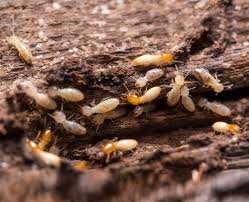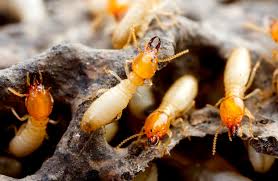Termite Control Review Fundamentals Explained
This webpage describes the three kinds of also the most common termite species which are located in infestations around Australia, subterranean, drywood and dampwood, and termite.
Termites are classified into three environmental categories according to their nesting and feeding habits: subterranean, drywood and dampwood.
Subterranean termites are the most frequent kind of termite that are among the most damaging pests worldwide and infests wood in structures. Outdoors they mainly infest timber that is dead in contact with the dirt, such as fallen branches, stumps and trees. They prefer even though they can digest wood, wood which has some degree of rust already, which makes it easier for them to digest it. .
Termite Control Specialists - Questions
Subterranean termites will need to be near a supply of moisture to survive, making their nests in or close to the ground where they can acquire moisture. They tunnel to access wood or soil and in dry seasons that they tunnel to achieve moisture. .
Dirt is used by the termites for a material to construct nests and shelter tubes, which can be composed of soil, wood, faeces and saliva. Some species construct carton nests above ground and construct shield tubes (also called mud tubes) to link the nest into the ground.
Foraging is determined by the weather, with higher activity in summer and activity in winter or dry conditions . In tropical regions they can forage all year round, with peaks through wetter conditions.
The 7-Minute Rule for Termite Control Review
Drywood termites live inside pieces of timber, wholly in colonies, generally less than 1000 people. There might be small colonies within one piece of timber or item. They could feed across rings as is normal subterranean termites so that the galleries do not follow the grain of wood, however they are inclined to steer clear of heartwood.

Colonies can grow for many years undetected until even the swarm or the wood breaks. The winged alates, which are the sole exemptions that depart the nest, might not be made for years in a colony that was brand new before the population reaches a vital point. They then leave the nest to pair up and discover a website to mate and start a new colony, generally not far from the parent colony. .
Dampwood termites normally infest timber that stays moist due to contact with the soil or through a water flow in a building. They are likely to infest timber that's outside stump or logs in contact with the ground.

Rumored Buzz on Termite Control Review
Dampwood termites live wholly that they feed on and make big galleries that are open. As with drywood termites, they may infest timber for years before they are discovered, which is likely when the alates swarm from a mature colony. Swarming may occur over several months, with species swarming at different times.
If they are observed at a building they're a sign of a moisture problem. They are pests that are minor and can be controlled in structures by taking away the supply of moisture. In trees they tend to feed on wood that is dead and rotting.
Species can be difficult to recognize, even for the specialists. Identification is dependent on the soldiers, which is the termite caste that has the most distinguishable features.
Of the species listed above, it is.
The Best Guide To Termite Control Specialists
The soldier's head is yellowish and rectangular pear-shaped with darker thin mandibles. Body is left up to 7 mm long. It's easily confused with two other indigenous Coptotermes species, including C. frenchi and C. lacteus (Victoria Museum)
The soldiers produce a white sticky liquid from an opening (fontanelle) on front of mind when protecting the nest from assault.
Mounds are not generally built by coptotermes species, except in other areas of Australia and Queensland. They website here mostly nests in trees, stumps, sticks, buried wood under buildings spaces, around houses and in walls. Favoured trees for nesting are various eucalypts, English oaks and peppercorns. The colony is mostly found at the root crown or the part of their trunk.
Termite Control Services In Adelaide for Dummies
Although Mastotermes darwiniensis is the destructive locally across its range in tropical northern Australia coptotermes acinaciformis is the most destructive termite species in Australia overall. C. acinaciformis attacks all timber structures and damages forest and ornamental trees as well as fruit trees.